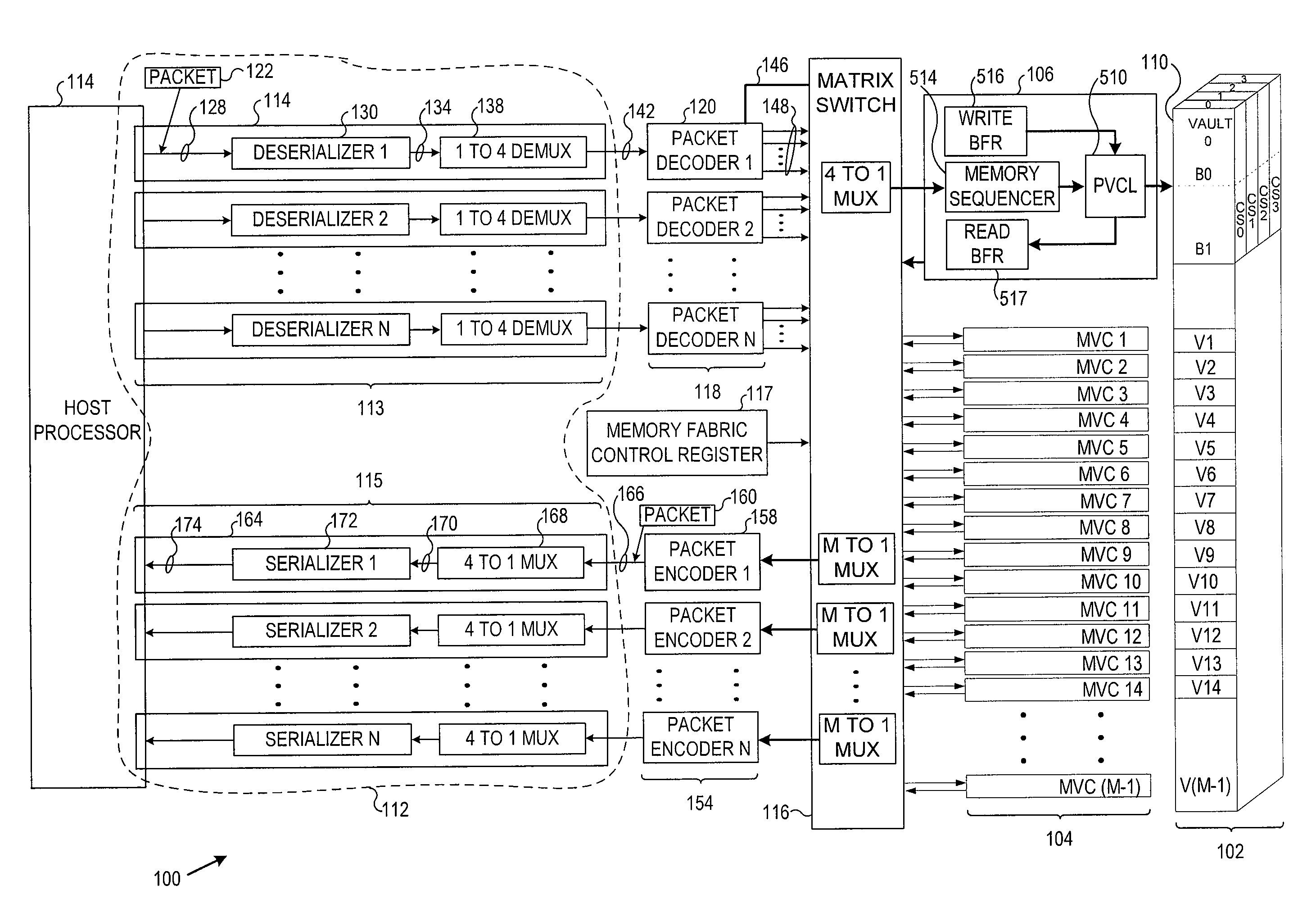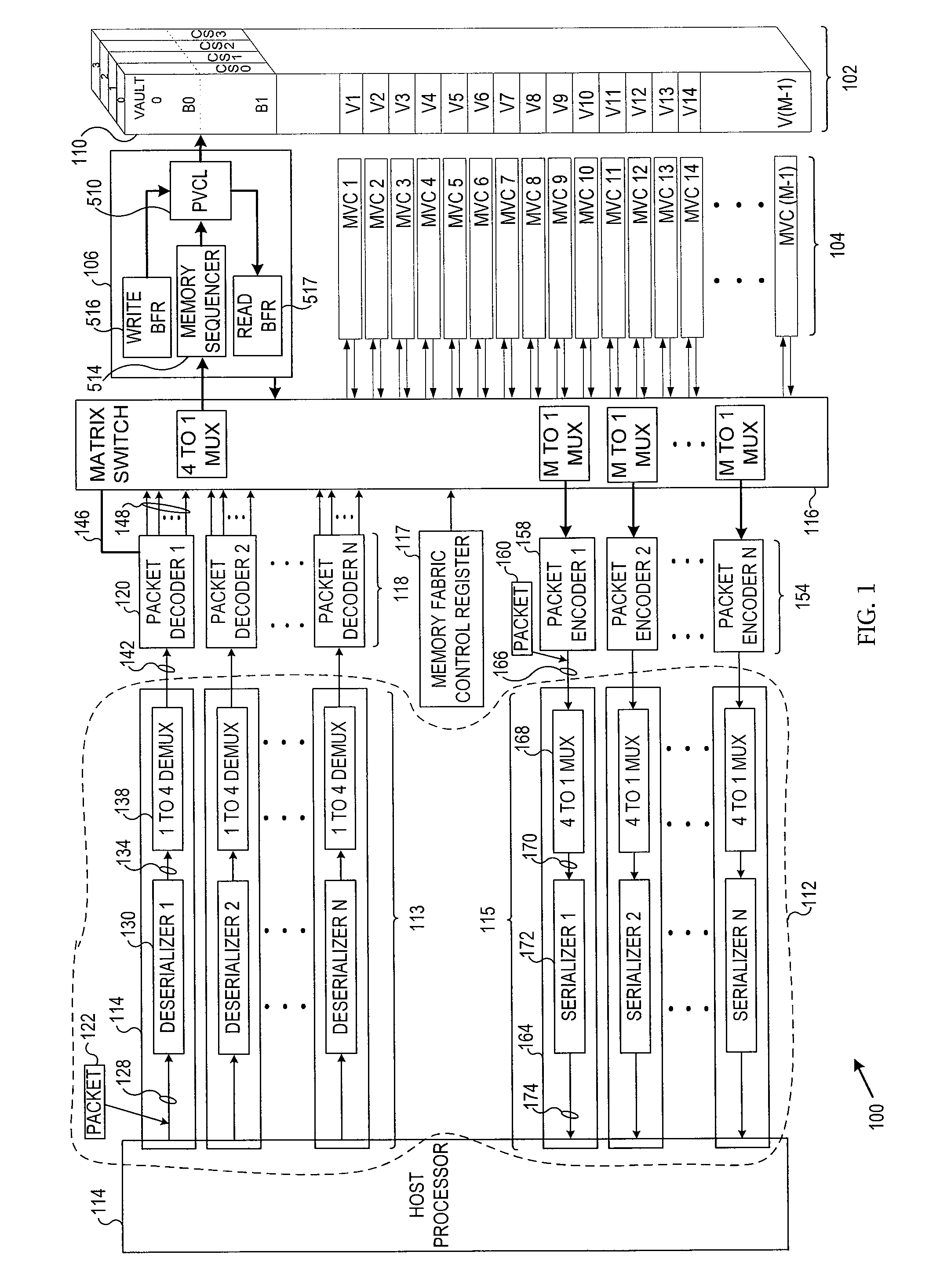Systems and methods for monitoring a memory system
a memory system and memory technology, applied in the field of semiconductor memories, can solve the problems of limiting the number of memory cards or modules, and affecting the performance of the modem host processor
- Summary
- Abstract
- Description
- Claims
- Application Information
AI Technical Summary
Benefits of technology
Problems solved by technology
Method used
Image
Examples
Embodiment Construction
[0011]FIG. 1 is a block diagram of a memory system 100 according to various example embodiments of the current invention. One or more embodiments operate to substantially concurrently transfer a plurality of outbound streams of commands, addresses, and / or data between one or more originating devices (e.g., one or more processors) and a set of stacked-array memory “vaults.” Increased memory system density, bandwidth, parallelism, and scalability may result.
[0012]Multi-die memory array embodiments herein aggregate control logic that is normally located on each individual memory array die in previous designs. Subsections of a stacked group of dies, referred to herein as a “memory vault,” share common control logic. The memory vault architecture strategically partitions memory control logic to increase energy efficiency while providing a finer granularity of powered-on memory banks. Embodiments herein also enable a standardized host processor to memory system interface. The standardized...
PUM
 Login to View More
Login to View More Abstract
Description
Claims
Application Information
 Login to View More
Login to View More - R&D
- Intellectual Property
- Life Sciences
- Materials
- Tech Scout
- Unparalleled Data Quality
- Higher Quality Content
- 60% Fewer Hallucinations
Browse by: Latest US Patents, China's latest patents, Technical Efficacy Thesaurus, Application Domain, Technology Topic, Popular Technical Reports.
© 2025 PatSnap. All rights reserved.Legal|Privacy policy|Modern Slavery Act Transparency Statement|Sitemap|About US| Contact US: help@patsnap.com



